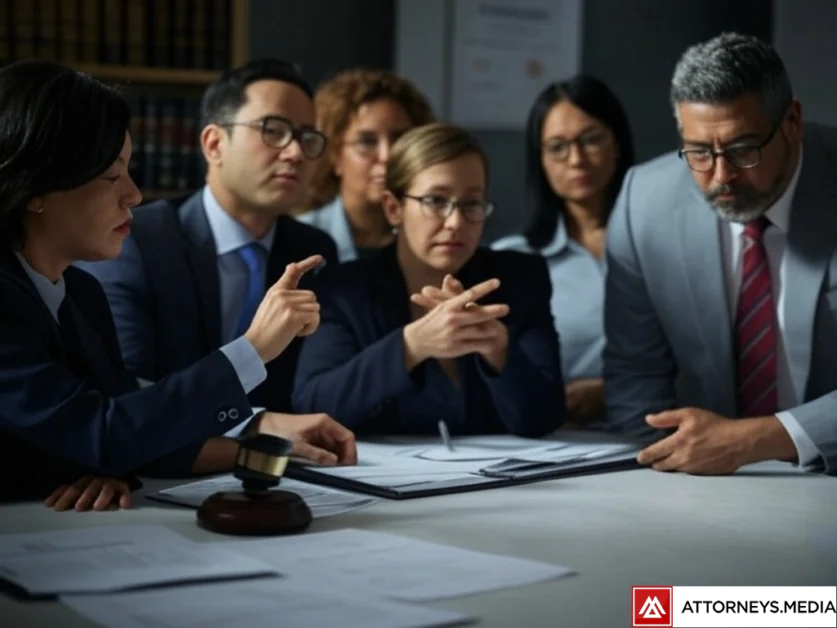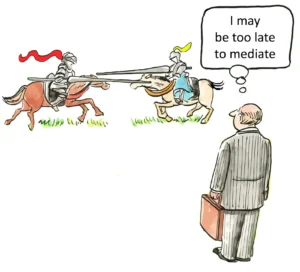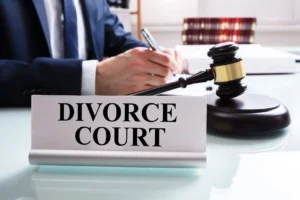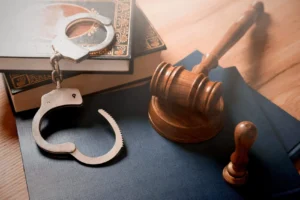Illegal Search and Seizure: Getting Evidence Thrown Out of Court
The Fourth Amendment of the United States Constitution stands as a bulwark against unreasonable searches and seizures, safeguarding the privacy and property rights of American citizens against governmental overreach. This fundamental protection, however, is not absolute, and the complexities surrounding illegal search and seizure and the process of getting evidence thrown out of court continue to evolve in our modern legal landscape. Understanding these intricacies is crucial for both legal practitioners and citizens alike, as the outcome of criminal proceedings often hinges on the admissibility of evidence obtained through law enforcement actions.
At its core, the Fourth Amendment requires that searches and seizures be reasonable and, in most cases, conducted pursuant to a valid warrant based on probable cause. When law enforcement officials deviate from these constitutional mandates, the evidence they obtain may be subject to exclusion from court proceedings. This exclusionary rule serves as a powerful deterrent against police misconduct and upholds the integrity of the judicial system. However, the application of this rule is far from straightforward, involving a complex interplay of legal precedents, exceptions, and evolving interpretations of what constitutes a reasonable expectation of privacy in an increasingly digital world.
The process of challenging the admissibility of evidence on the grounds of an illegal search or seizure typically begins with a motion to suppress. This legal maneuver allows defendants to argue that certain evidence should be excluded from trial due to constitutional violations in its procurement. The success of such motions can dramatically alter the course of criminal proceedings, potentially leading to the dismissal of charges or significantly weakening the prosecution’s case. As such, the ability to effectively argue for the suppression of evidence has become a critical skill for criminal defense attorneys and a key battleground in the pursuit of justice.
In recent years, technological advancements have introduced new complexities into Fourth Amendment jurisprudence. The ubiquity of smartphones, GPS tracking devices, and other digital technologies has raised novel questions about the scope of privacy protections and the limits of government surveillance. Courts have grappled with issues such as the constitutionality of warrantless cell phone searches, the use of thermal imaging devices to detect activities within private residences, and the collection of digital data through various means. These developments have necessitated a reevaluation of traditional Fourth Amendment doctrines and their application to modern contexts.
The concept of probable cause, central to the issuance of search warrants and the justification for warrantless searches in exigent circumstances, remains a subject of ongoing legal debate. Courts must often navigate the fine line between legitimate law enforcement needs and the protection of individual privacy rights. The standard for establishing probable cause requires that there be sufficient facts and circumstances to warrant a reasonable person to believe that evidence of a crime will be found in the place to be searched. However, the interpretation of this standard can vary depending on the specific circumstances of each case and the evolving societal norms regarding privacy expectations.
One of the most contentious areas in Fourth Amendment law concerns the various exceptions to the warrant requirement. While the general rule demands that searches be conducted pursuant to a valid warrant, courts have recognized several situations where warrantless searches may be deemed reasonable. These exceptions include searches incident to arrest, automobile searches, consent searches, and searches under exigent circumstances. The application of these exceptions often involves complex factual analyses and can lead to divergent outcomes in seemingly similar cases. For instance, the scope of a permissible search incident to arrest has been the subject of significant judicial scrutiny, with courts seeking to balance officer safety and evidentiary preservation against individual privacy rights.
The exclusionary rule, which mandates the suppression of illegally obtained evidence, serves as the primary remedy for Fourth Amendment violations. This judicially created doctrine aims to deter police misconduct by removing the incentive to violate constitutional rights in pursuit of evidence. However, the rule is not without its critics, who argue that it can lead to the release of guilty individuals on technicalities. In response to these concerns, courts have developed various exceptions to the exclusionary rule, such as the good faith exception, which allows for the admission of evidence obtained by officers acting in reasonable reliance on a warrant that is later found to be invalid.
The process of getting evidence thrown out of court through a motion to suppress involves several key steps. First, the defense must identify potential Fourth Amendment violations in the procurement of evidence. This requires a thorough examination of police reports, witness statements, and other relevant documents. Once potential violations are identified, the defense must file a motion articulating the specific constitutional infringements and arguing for the suppression of the tainted evidence. The prosecution then has the opportunity to respond, often asserting that the search was lawful or that an exception to the exclusionary rule applies.
The burden of proof in suppression hearings typically falls on the prosecution to demonstrate that the challenged search or seizure was constitutional. This often involves presenting testimony from the officers involved and any other witnesses who can speak to the circumstances surrounding the evidence collection. The defense, in turn, may cross-examine these witnesses and present its own evidence to support the motion to suppress. The judge then weighs the arguments and evidence presented by both sides to determine whether the Fourth Amendment was violated and, if so, whether the exclusionary rule should apply.
In evaluating motions to suppress, courts employ a totality of the circumstances test, considering all relevant factors to determine whether a search or seizure was reasonable. This holistic approach allows for flexibility in addressing the diverse scenarios that arise in Fourth Amendment cases but can also lead to unpredictable outcomes. Factors that may influence a court’s decision include the severity of the alleged crime, the immediacy of the threat to officer safety or public safety, the strength of the probable cause, and the nature of the privacy interest at stake.
The concept of standing plays a crucial role in Fourth Amendment litigation. To challenge the constitutionality of a search or seizure, a defendant must demonstrate that they had a legitimate expectation of privacy in the place searched or the item seized. This requirement has led to complex legal analyses in cases involving shared spaces, borrowed vehicles, and digital information stored on third-party servers. The Supreme Court’s decisions in cases like Rakas v. Illinois and United States v. Payner have shaped the contours of Fourth Amendment standing, often limiting the ability of individuals to challenge searches that did not directly implicate their personal privacy interests.
The fruit of the poisonous tree doctrine extends the reach of the exclusionary rule beyond the immediately tainted evidence. Under this principle, evidence derived from an illegal search or seizure may also be subject to suppression. For example, if an illegal search leads to a confession, both the physical evidence found during the search and the subsequent confession may be excluded. However, courts have recognized exceptions to this doctrine, such as the independent source rule and the inevitable discovery rule, which allow for the admission of evidence that would have been obtained through lawful means regardless of the constitutional violation.
In recent years, the Supreme Court has shown a willingness to reconsider longstanding Fourth Amendment doctrines in light of technological advancements. The landmark decision in Carpenter v. United States, which held that the government’s acquisition of cell-site location information constitutes a search under the Fourth Amendment, signaled a shift in the Court’s approach to digital privacy. This decision has far-reaching implications for various forms of electronic surveillance and data collection, potentially requiring law enforcement to obtain warrants in situations where they previously operated without such constraints.
The intersection of Fourth Amendment protections and modern technology continues to present novel legal challenges. Issues such as the use of facial recognition software, the deployment of drones for surveillance purposes, and the collection of metadata from electronic communications have sparked debates about the appropriate balance between public safety and individual privacy. As technology evolves, courts will likely face increasingly complex questions about the scope of Fourth Amendment protections in the digital age.
The application of the Fourth Amendment to border searches has been another area of significant legal development. Courts have generally recognized a border search exception to the warrant requirement, allowing for more expansive searches of individuals and their belongings at international borders and their functional equivalents. However, the extent of this exception, particularly as it applies to electronic devices containing vast amounts of personal data, remains a subject of ongoing judicial scrutiny and public debate.
The role of consent in Fourth Amendment jurisprudence cannot be overstated. Consent searches represent a significant exception to the warrant requirement, allowing law enforcement to conduct searches without probable cause or a warrant if an individual voluntarily agrees to the search. However, the voluntariness of consent is often contested, with courts considering factors such as the individual’s age, education, intelligence, and the circumstances under which consent was obtained. The scope of consent is also frequently litigated, with disputes arising over whether an individual’s agreement to a limited search authorized more extensive investigative actions.
The plain view doctrine provides another avenue for law enforcement to seize evidence without a warrant. Under this principle, officers may lawfully seize evidence that is in plain view during a legitimate police encounter, provided the incriminating nature of the evidence is immediately apparent. The application of this doctrine has been particularly contentious in cases involving digital evidence, where the vast amount of information contained on electronic devices raises questions about the limits of what can be considered in “plain view” during a search.
The concept of curtilage, or the area immediately surrounding a home, has been a focal point of Fourth Amendment litigation. Courts have grappled with defining the boundaries of curtilage and determining the level of Fourth Amendment protection it should receive. The Supreme Court’s decision in Florida v. Jardines, which held that bringing a drug-sniffing dog onto a homeowner’s porch constituted a search under the Fourth Amendment, highlighted the continued importance of physical trespass in Fourth Amendment analysis alongside the reasonable expectation of privacy test established in Katz v. United States.
The use of drug-sniffing dogs in law enforcement has raised its own set of Fourth Amendment concerns. While the Supreme Court has held that a dog sniff does not constitute a search under the Fourth Amendment when conducted in certain public places, the reliability of drug-detection dogs and the proper protocols for their use remain subjects of legal debate. Courts have had to address issues such as the training and certification of these dogs, the significance of false alerts, and the permissible scope of searches following a positive alert.
The application of the Fourth Amendment to administrative searches, such as health and safety inspections, has required courts to balance the government’s regulatory interests against individual privacy rights. While these searches generally do not require individualized suspicion, they must still adhere to reasonable limitations and be conducted pursuant to a neutral inspection scheme. The expansion of administrative searches in various contexts, from airport security screenings to workplace drug testing, has led to ongoing discussions about the appropriate scope of these exceptions to the warrant requirement.
In conclusion, the landscape of Fourth Amendment jurisprudence continues to evolve in response to technological advancements, changing societal norms, and the ever-present tension between public safety and individual privacy. The process of getting evidence thrown out of court based on illegal search and seizure remains a critical aspect of criminal defense, requiring a nuanced understanding of constitutional principles, statutory law, and judicial precedents. As courts continue to grapple with novel Fourth Amendment issues, legal practitioners must stay abreast of these developments to effectively protect their clients’ rights and uphold the fundamental principles enshrined in the Constitution. The ongoing dialogue between law enforcement needs and privacy protections ensures that the Fourth Amendment remains a living, breathing safeguard against governmental overreach in the pursuit of justice.
Citations:
- Unreasonable Search and Seizure Overview
- Three Examples of Illegal Search and Seizures
- Impact of Unlawful Search in Drug Cases
- Fourth Amendment on Search and Seizure
- Understanding Fourth Amendment Illegal Searches
- Exclusionary Rule and Fourth Amendment Violations
- Federal Evidence Suppression Strategies
- How to Get Evidence Thrown Out
- Motion to Suppress Legal Definition
- Search and Seizure Legal Overview
- Fourth Amendment Legal Overview
- How to Suppress Evidence in Court
- Getting Evidence Thrown Out Part 2
- Evidence Thrown Out in DWI Cases
- Fourth Amendment Search and Seizure Casebook
- Supreme Court Cases on Search and Seizure
- Rights Against Unreasonable Searches
- Wikipedia on Search and Seizure
- What the Fourth Amendment Means
- Congress on Fourth Amendment History
- Illegal Search and Seizure Explained
- Legal Dictionary Definition of Unreasonable Search
- Fourth Amendment by National Constitution Center
- Warrant Exceptions Under Fourth Amendment
- Particularity in Fourth Amendment Searches
- Congress on Fourth Amendment Scope
- Justia on Fourth Amendment Overview
- Fourth Amendment Text by Congress
- Fourth Amendment by Cornell Law
- ACLU Court Cases on Search and Seizure
- Examples of Fourth Amendment Violations
- Your Fourth Amendment Rights Explained
- Supreme Court Case on Search and Seizure
- Were Your Rights Violated in Search
- Oyez on Search and Seizure Issues
- Exclusionary Rule Legal Definition
- What is Illegal Search and Seizure
- Fourth Amendment and Search and Seizure
- Unlawful Search and Seizure Overview
- GSU Research on Exclusionary Rule
- Foundations of the Exclusionary Rule
- ACLU Case Tatum v State
- Exclusionary Rule by The Defenders
- Congress on Exclusionary Rule Exceptions
- Chicago Law Review on Exclusionary Rule
- History of Fourth Amendment Exclusionary Rule
- Video on Fourth Amendment Rights
- Congress on Exclusionary Rule Overview
- Britannica on Exclusionary Rule
- Sample Motion to Suppress Evidence
- Suppression of Evidence Legal Definition
- When Can Evidence Be Thrown Out
- Sample Motion to Suppress Statements
- Common Grounds for Motions to Suppress
- Reddit on Getting Evidence Thrown Out
- Motion to Suppress All Evidence
- NIJ on Motion to Suppress
- Motion to Suppress Evidence in California
- Basic Motion to Suppress Template
- Reddit on Frequency of Evidence Suppression
- How to Get Evidence Thrown Out
- Right to Protection from Illegal Search
- Fourth Amendment Annotations by FindLaw
- Keyword Search Warrants and Fourth Amendment
- Wikipedia on Fourth Amendment
- Reagan Library on Fourth Amendment
- ACLU on ICE Fourth Amendment Violations
- Examples of Illegal Police Searches
- Protecting Fourth Amendment Rights
- Mapp v Ohio Search and Seizure Case
- Saving Illegally Obtained Evidence
- Exclusionary Rule Definition and History
- Wikipedia on Exclusionary Rule
- Nolo on the Exclusionary Rule
- Understanding the Exclusionary Rule in Wisconsin
- Fourth Amendment and Exclusionary Rule
- Stanford Law Motion to Suppress
- Motions to Suppress by Cappetta Law




















